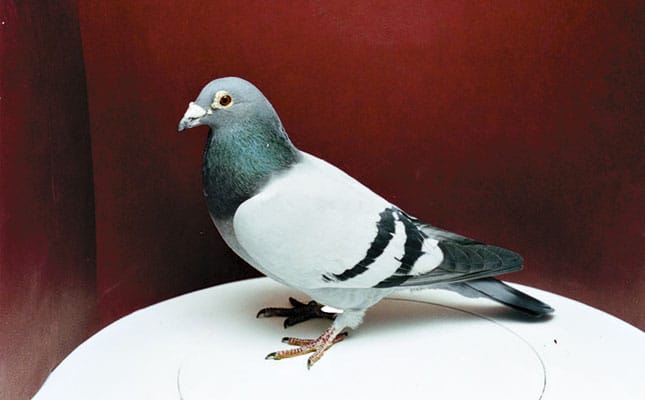

Pigeons can carry and spread diseases to people and livestock through their droppings. Around grain handling facilities, pigeons consume and can contaminate large quantities of food destined for human or livestock consumption. Pigeon manure deposited on park benches, statues, cars, and unwary pedestrians is an aesthetic problem. A flock of just 100 pigeons can produce up to 4,800 pounds of guano, annually. Large amounts of droppings may kill vegetation and produce an objectionable odor. Pigeon droppings deface and accelerate the deterioration of buildings and increase the cost of maintenance.


The damage and risk from pigeons typically fall into these categories:
#Pigeon speed calculator how to#
Our detailed guide “ How to Get Rid of Pigeons” addresses all the different control methods and describes them in some detail. There is a range of methods to control them. Pigeons and their feces can cause damage to structures and represent health and safety risks. In fact, when relocated involuntarily, they can return – sometimes within hours – to their original location. Despite these demonstrated abilities, feral pigeons are rather sedentary and rarely leave their local areas. Homing pigeons, are well known for their ability to find their way back home from long distances and at high speed. The rock pigeon makes a flimsy nest, but it often reuses the same location repeatedly, even building a new nest on top of the last one. Because the pigeons do not try to remove the feces of their nestlings, the nest becomes a sturdy, mud-like mound that gets larger over time. Because of their domestic roots, and because people have bred pigeons for many different colors and accessories, feral pigeons can have a variety of feathered looks. Escaped pigeons from breeders readily form flocks, and other stray birds may join them, thus becoming a feral population. The pigeon has a long history of association with humans, having been used for food and entertainment for over 5,000 years. Rather, pigeons were introduced into North America in the early 1600’s. City buildings and window ledges mimic the rocky cliffs originally inhabited by their ancient ancestors in Europe. For more information seelink on: names: Rock pigeon, rock dove, domestic pigeon, common pigeonĪ common sight in urban areas around the world, the pigeon is not native to North America. *SPEED CALCULATOR WITH CLOCK DEVIATION will allow you to figurerace time including +/- clock variation. Just enter your distance, Liberation time, and arrival time.This calculator will tell you the birds Overfly allowance asfigured in Winspeed. * SPEED CALCULATOR will figure your racing pigeon speed in YPM(Yards per minute), MPH (miles per hour), and KPH (kilometers perhour). At the moment a bird arrives, there is a CAPTUREbutton to either save your screen as a photo image to your ipod,ipad, or iphone, or to send a screenshot as an email. You canwatch the speed decrease and overfly increase on the display astime is passing.

It will tickaway live, in real time showing you the birds current speed, flighttime, and overfly if it were to arrive at that moment. * REALTIME CALCULATOR is a live, ticking countdown speed displayto keep running while awaiting a birds arrival home. This is a useful and fun tool that can be appreciated by everyRacing Pigeon enthusiast. Allows for your DISTANCE to be entered as either: MILES,KILOMETERS, or MILES & YARDS. This app will figure your racing pigeon Flying time,Overfly, & Speed in YPM (yards per minute), MPH (miles perhour), MPM (meters per minute) and KPH (kilometers per hour). Pigeon Racing Speed & Real Time Race SpeedCalculator.


 0 kommentar(er)
0 kommentar(er)
